Key Takeaways
1. Quantum Computing: A Revolution in Calculation
Performing calculations with a device that makes use of the special properties of quantum particles, such as photons of light or electrons, in order to perform certain operations exponentially faster than is possible with a conventional computer.
Beyond Classical Limits. Quantum computing harnesses the unique properties of quantum mechanics to perform calculations far beyond the reach of classical computers. This isn't just about faster processing; it's about solving problems that are fundamentally intractable for traditional machines. Quantum computers leverage phenomena like superposition and entanglement to explore vast solution spaces simultaneously.
Exponential Speedup. The power of quantum computing lies in its potential for exponential speedup in certain types of calculations. This means that as the problem size increases, the time required to solve it on a quantum computer grows much more slowly than on a classical computer. This advantage opens doors to solving complex problems in fields like cryptography, drug discovery, and materials science.
Transformative Potential. Quantum computing promises to revolutionize numerous industries by enabling solutions to previously unsolvable problems. From designing new drugs and materials to optimizing complex logistics and breaking modern encryption, the potential impact of quantum computing is vast and transformative. The development of practical quantum computers could reshape our technological landscape.
2. From Babbage to Bell Labs: The Genesis of Quantum Algorithms
Rather than wait for programs to be developed, the Engine could instantly leap into action.
Historical Parallels. The development of quantum algorithms mirrors the early days of classical computing, with theoretical algorithms preceding practical hardware. Ada Lovelace's work on Babbage's Analytical Engine and Lov Grover's quantum search algorithm both represent visionary leaps, anticipating the capabilities of machines that were yet to exist. This shows the power of theoretical innovation in driving technological progress.
Grover's Algorithm. Lov Grover's quantum search algorithm, developed at Bell Labs, offers a revolutionary approach to searching unstructured data. Unlike classical search algorithms that may need to examine every item in a database, Grover's algorithm can find a specific item with a number of steps proportional to the square root of the number of items. This provides a significant speedup for search-intensive tasks.
Shor's Algorithm. Peter Shor's factoring algorithm, also developed at Bell Labs, poses a potential threat to modern internet security. This algorithm can efficiently factor large numbers into their prime factors, a task that is computationally infeasible for classical computers. The security of many encryption systems relies on the difficulty of this factorization, making Shor's algorithm a potential game-changer in cryptography.
3. Bits, Bytes, and Gates: The Foundation of Computing
The computer’s processor has to be able manipulate data by using logical operations.
Binary Basics. Classical computers operate on bits, which can be either 0 or 1. These bits are grouped into bytes and words, forming the foundation for storing and processing information. The architecture of a computer, as envisioned by John von Neumann, includes a central processing unit (CPU) and memory unit, enabling the execution of instructions and manipulation of data.
Logic Gates. The fundamental units of processing in a classical computer are logic gates, such as AND, OR, and NOT. These gates perform basic logical operations on one or two bits at a time, enabling the computer to perform arithmetic, comparisons, and other complex tasks. The combination of these gates allows for the construction of sophisticated circuits that perform a wide range of computations.
Algorithms and Programs. Algorithms are structured instructions for solving a problem, while computer programs are implementations of these algorithms in a specific programming language. These programs are then compiled into machine code, which the computer can execute directly. The efficiency of an algorithm can significantly impact the performance of a computer program, making algorithm design a crucial aspect of computer science.
4. Quantum Strangeness: Probability and Superposition
I hope you can accept Nature as she is – absurd.
Quantum Principles. Quantum physics governs the behavior of matter and energy at the atomic and subatomic levels, revealing phenomena that defy classical intuition. Two key principles of quantum mechanics are superposition and entanglement, which form the basis for quantum computing. These principles challenge our understanding of reality and open new possibilities for computation.
Superposition. Superposition allows a quantum particle, such as a qubit, to exist in multiple states simultaneously. Unlike a classical bit, which can be either 0 or 1, a qubit can be in a combination of both states, represented as a probability distribution. This enables quantum computers to explore multiple possibilities concurrently, leading to potential speedups in certain calculations.
Entanglement. Entanglement is a phenomenon where two or more quantum particles become linked together in such a way that they share the same fate, no matter how far apart they are. When one particle's state is measured, the state of the other particle is instantly determined, even if they are separated by vast distances. This interconnectedness can be used to perform computations and transmit information in novel ways.
5. Quantum Algorithms: Supercharging Search and Factorization
Quantum mechanical systems can make what he calls ‘interaction free measurements’.
Grover's Search Algorithm. Grover's algorithm leverages quantum superposition to speed up the search for a specific item in an unstructured database. By exploring multiple possibilities simultaneously, Grover's algorithm can find the target item with a number of steps proportional to the square root of the number of items, offering a significant advantage over classical search algorithms. This has implications for search engines and database management.
Shor's Factoring Algorithm. Shor's algorithm exploits quantum properties to efficiently factor large numbers into their prime factors. This capability poses a potential threat to modern encryption systems, which rely on the difficulty of this factorization for their security. The development of practical quantum computers capable of running Shor's algorithm could necessitate a shift to quantum-resistant encryption methods.
Monte Carlo Methods. Quantum computers can also enhance Monte Carlo methods, which are used to estimate numerical values through repeated random sampling. A quantum algorithm developed by Ashley Montanaro should require only the square root of the number of trials to reach the same level of accuracy. This would mean, for example, to get to my value of 3.141… I would only have to have undertaken around 700 virtual drops, rather than half a million.
6. Qubit Realities: Building Blocks of Quantum Hardware
A fully functional quantum computer with just 100 accessible qubits could not only outclass my computer, but every supercomputer currently in existence added together.
Qubit Candidates. The physical realization of qubits is a major challenge in quantum computing. Various quantum particles, such as photons, electrons, and ions, are being explored as potential qubit candidates. Each type of qubit has its own advantages and disadvantages in terms of stability, coherence, and ease of manipulation.
Trapping and Controlling Qubits. To function as qubits, quantum particles must be trapped and controlled with high precision. Techniques such as ion traps, quantum dots, and superconducting circuits are used to isolate and manipulate qubits, enabling them to perform quantum operations. Maintaining the coherence of qubits, preventing them from interacting with their environment and losing their superposition, is a critical requirement.
Quantum Gates. Quantum gates are the building blocks of quantum circuits, performing operations on qubits to manipulate their quantum states. These gates are analogous to logic gates in classical computers, but they operate on superpositions and entangled states. The design and implementation of quantum gates are essential for executing quantum algorithms and performing complex computations.
7. Quantum Error Correction: Taming Decoherence
Missing once is an accident. Missing twice is the start of a new habit.
Decoherence Challenge. Decoherence, the loss of quantum coherence due to interactions with the environment, is a major obstacle to building practical quantum computers. Decoherence can introduce errors into quantum computations, making it difficult to obtain reliable results. Quantum error correction techniques are needed to mitigate the effects of decoherence and ensure the accuracy of quantum computations.
Error Correction Strategies. Quantum error correction involves encoding quantum information in a redundant manner, using multiple physical qubits to represent a single logical qubit. This allows for the detection and correction of errors without directly measuring the quantum state, which would cause decoherence. The development of efficient quantum error correction codes is crucial for scaling up quantum computers.
Fault-Tolerant Computing. Achieving fault-tolerant quantum computing, where computations can be performed reliably even in the presence of errors, is a long-term goal. This requires not only effective error correction codes but also robust quantum gates and control systems. The realization of fault-tolerant quantum computers would pave the way for solving complex problems that are beyond the reach of classical computers.
8. Quantum Supremacy: A Glimpse into the Future
Genes do not eliminate the need for hard work. They clarify it. They tell us what to work hard on.
Defining Quantum Supremacy. Quantum supremacy refers to the point at which a quantum computer can perform a calculation that is practically impossible for any classical computer to achieve in a reasonable amount of time. This milestone would demonstrate the potential of quantum computing to surpass the capabilities of classical computing for certain types of problems. However, the definition and demonstration of quantum supremacy are subjects of ongoing debate.
Google's Sycamore Processor. In 2019, Google claimed to have achieved quantum supremacy using its Sycamore processor, which performed a specific calculation in 200 seconds that would take a state-of-the-art classical supercomputer approximately 10,000 years. This claim was met with skepticism from some researchers, who argued that the classical computation time was overestimated. Nevertheless, the Google experiment represented a significant step forward in the development of quantum computing.
Beyond Supremacy. While achieving quantum supremacy is a significant milestone, it is not the end goal of quantum computing. The focus is now shifting towards developing practical quantum computers that can solve real-world problems and provide a sustained advantage over classical computers. This requires not only improving the hardware but also developing new quantum algorithms and software tools.
Last updated:
Review Summary
Quantum Computing: The Transformative Technology of the Qubit Revolution receives mixed reviews. Readers appreciate its accessible introduction to quantum computing for laypeople, praising the author's clear explanations and historical context. However, some find it too basic or lacking in technical depth. Critics note that a significant portion of the book covers conventional computing history rather than quantum specifics. Overall, readers value the book as a starting point for understanding quantum computing but suggest supplementing it with more advanced resources for a comprehensive grasp of the subject.
Similar Books
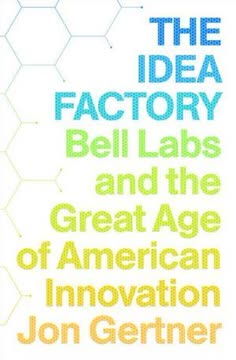

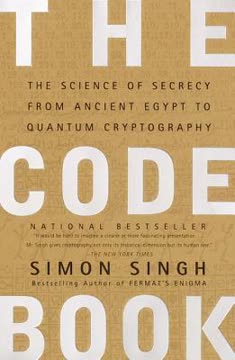


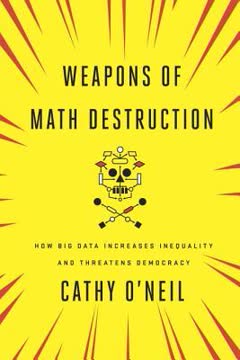
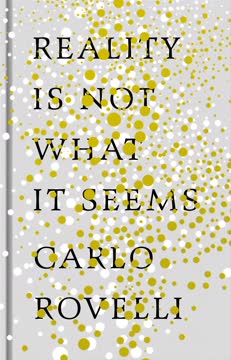
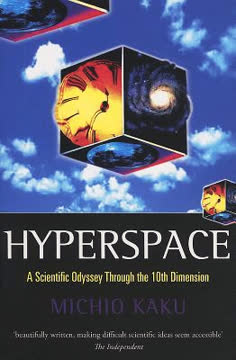

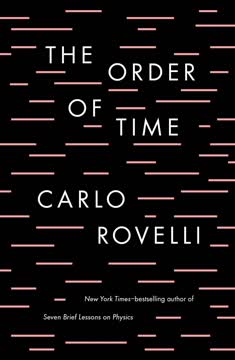
Download PDF
Download EPUB
.epub digital book format is ideal for reading ebooks on phones, tablets, and e-readers.








